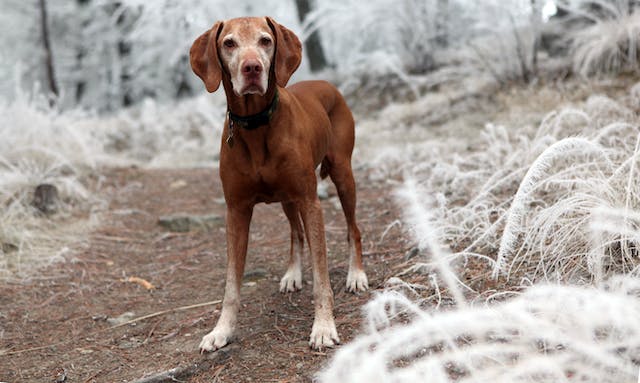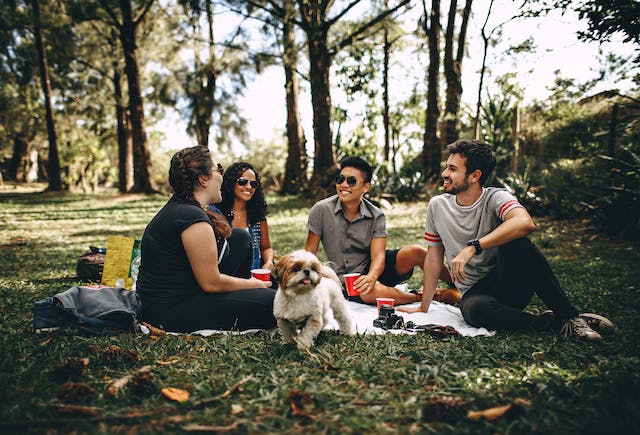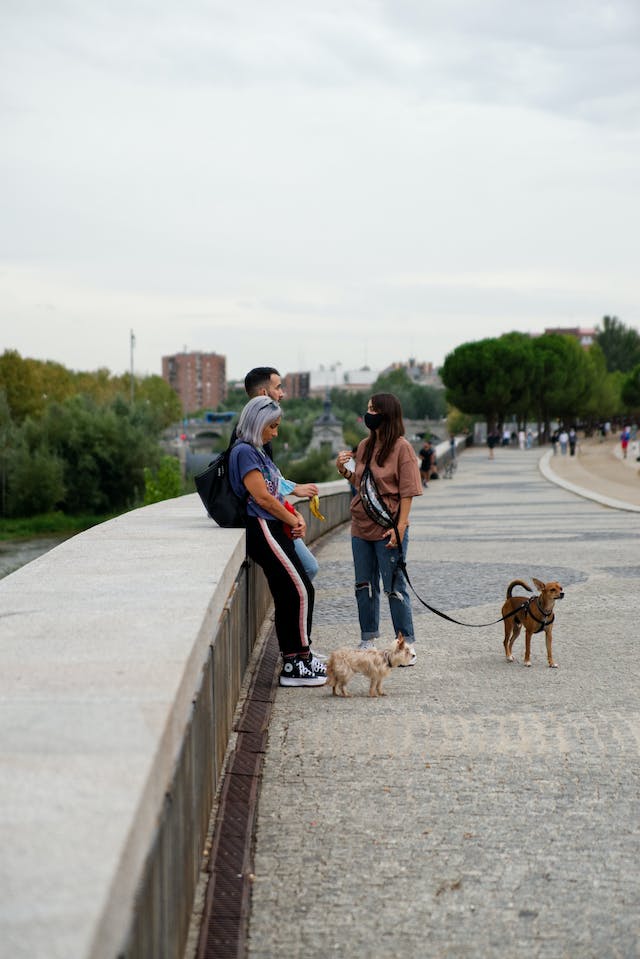
How to Search for a Lost Dog
If you’ve lost your beloved dog, you may be wondering what you should do next. The thought of your dog being lost can be overwhelming, but it’s important to stay calm and take action as soon as possible. With the right approach, you can increase your chances of finding your lost pup and getting them home safely. In this guide, we’ll discuss some strategies and techniques to help you search for your lost dog. Read on to get started, and make sure to make a lost dog post on PawBoost to start spreading awareness as soon as possible.
The First Few Hours Are Crucial – First Steps
Losing your best friend is distressing, but you should make sure to make the most of the first few hours after they go missing. These first few hours are likely when they’ll be closest to home, so staying calm and taking control of the situation will help you find them faster. With that in mind, here are some things you can do in the initial hours:
Searching and Securing the Area
At first, you need to search the immediate area before going too far from where they went missing. If you don’t find your dog right away, then your area of search will gradually expand, but it’s likely they haven’t gone far.
Start by searching nearby parks, trails and wooded areas. Also, dogs have an incredible sense of smell, so make sure to check out any areas that you frequently bring them to. They may have headed toward what’s familiar if they’re disoriented or scared.
Also, it’s possible that your pup may decide to hide if they’re especially frightened. Make sure to check in hiding places like under porches and decks when conducting your initial search. Also, you’ll want to set up a sort of home base where your dog went missing to secure the area.
This should be a central location where you can leave food, water and a familiar scent that could draw them back. Something like their favorite blanket or toy would help them. It can also help to leave a piece of your clothing so they can track your scent.
Assessing the Situation
Remember, staying calm is an important part of the search process. While you might be feeling frantic, take a breath and try to assess the situation. Think about your dog’s habits and behaviors. You know your dog better than anyone, so think about how they would act. Do they like to chase cars? Do they get scared and run away from loud noises? Do they love going to the dog park and rushing to see their fellow furry friends as soon as you leave the house?
Consider how your dog acts and follow your instincts from there. Also, make sure to assess the surroundings of where you lost your dog. You may notice things your dog would gravitate toward, helping you narrow your search area.
Helping Your Pup Come Home on Their Own
As mentioned, dogs have an incredibly strong sense of smell and can often find their way home on their own. Before you go out searching, it’s a good idea to set out some food and water that will help them find their way back. Dogs often don’t go far, and you may find that your dog is back waiting for you when you return from your search.

Understanding Dog Behavior When Missing
When your furry best friend goes missing, it’s crucial to understand their behavior to improve your chances of finding them. Dogs can exhibit various behaviors when they’re lost, and recognizing these patterns can be essential in guiding your search efforts.
With that in mind, let’s take a look at some common traits, instincts and attractions dogs have when they go missing.
Common Traits – Breed, Size, Temperament
When you’re searching for a lost dog, it can be extremely helpful to keep common traits like their breed, size and temperament in mind. These considerations can help guide your search efforts.
First, consider the breed of your dog. For instance, herding breeds like Border Collies may have the drive to roam and explore, while smaller breeds may seek out safe and secure places to hide. On the same note, size plays a role in the behavior of lost dogs. Larger dogs tend to be less afraid of their surroundings, so you may find them wandering around, while you may find smaller dogs hiding out.
Also, your dog’s temperament can play a big role in their behavior. If your dog is friendly and loves other people and dogs, it may seek out populated areas like dog parks or other high-traffic areas. Shy dogs may opt for quieter locations where they can be left alone.
Common Instincts – Safety, Shelter, Survival
When a dog is lost, their natural survival instincts often kick in. This means they will likely be seeking safety and shelter while outside their usual environment.
Their need for shelter and safety will likely drive them to find hiding spots or places to sleep that provide them with some protection and security. They may hide under porches, under decks, in abandoned buildings, in sheds and in other places where they feel secure.
Survival instincts mean they’ll also be seeking out food and water sources to sustain themselves. Look for areas where these resources are readily available, such as parks, dumpsters, lakes and other places they may be able to find what they need.
Common Attractions – Scent, Sound and Food
Dogs have incredibly keen senses, and when they are lost, certain attractions can be powerful motivators for them to return. Scent, sound and food can all play a role in bringing your pup back home.
Dogs’ incredible sense of smell is one of their most powerful tools. As mentioned, it can help to leave familiar scents around your home to guide them back. Familiar items like your clothes, their favorite toy or their bed can help draw them back. Of course, food and treats are also great motivators.
Dogs also have a great sense of hearing. If you have a sound they respond to, like a squeaky toy, whistle or shaking a treat jar, bring it along when searching for them. It’s also a good idea to call out their name so they can hear your familiar voice and run toward your direction if you get near them.

Get Family, Friends and Neighbors to Help Search
Organizing a search party is one of the best things you can do when searching for your dog. More eyes on the lookout means more chances that someone might spot your pet. Enlist the help of as many family, friends and neighbors as you can to help search. This can be especially effective in the immediate hours after they go missing, as you can cover more ground near where your dog went missing.
Make sure to divide the search area among your search team. Also, provide everyone with a description and a recent photo of your dog if possible. Have people call out for your dog and provide some of their favorite treats to help people draw them in. It’s a good idea to equip each team with a leash, if possible, so they can secure your pup if they get close enough.
Contact Local Vets and Animal Shelters
Your local vets and animal shelters are also great resources when your dog goes missing. Often, people turn in missing pets to the local vet or animal shelter if they’re unable to find the owner. If you let your local vets and animal shelters know about your missing dog, they can contact you if your pup is turned in. Also, they may have additional resources to help you find your dog.
The Importance of Microchips
While we’re on the subject of vets and animal shelters, having your pet microchipped is a great preventative measure when you lose your pup. If your dog is turned into a location that has a microchip scanner, they can quickly look up your information and let you know your pup has been recovered.
If your pet is already microchipped, make sure that your contact information is updated. Log in to the microchip company’s online portal or contact customer service to update your phone number so you can get a call if your dog is turned in.

Spread the Word Far and Wide
You should spread the word as much as possible when your dog goes missing. The more people who know about your lost dog, the better your chances are of a happy reunion. With that in mind, let’s go over some of the top ways to raise local awareness about your lost dog.
Social Media and Neighborhood Apps
Social media is one of the best ways to spread the word about your missing dog. You can utilize platforms like Facebook, Instagram and even Twitter to share a description of your pet and a picture so people can keep an eye out. It’s a good idea to make these posts on local social media pages specifically made for lost and found pets, as this is where you’ll be able to get in front of people who actually have a chance of spotting your dog. Similarly, there are neighborhood apps that are hyper-localized to your community, so you can share that your dog went missing with people in your immediate area.
Online Lost Pet Platforms
Online lost pet platforms can be extremely helpful when you’re trying to find your missing pet. These platforms are specifically designed to help reunite missing pets with their owners. Platforms like PawBoost can help spread local awareness about your missing dog and reach more people who care about helping you find your pet.
Missing Dog Flyers
While spreading awareness online is always a great tool, don’t neglect physical flyers as part of your search strategy. Not everyone is on these social media lost & found pages, so you can reach people in your neighborhood by posting flyers around the community. Make sure your flyers clearly communicate that your dog is missing, include a recent photo and description and provide your contact information so people can get a hold of you if they find your dog. You can post flyers on community bulletin boards in pet stores, vet offices, coffee shops, grocery stores, public libraries and anywhere else that has high foot traffic. Just make sure to ask before you hang it up!
Advanced Search Techniques
If you’ve exhausted the initial search strategies and still haven’t found your lost pup, it’s time to turn to more advanced search techniques. These methods can help you cover more ground and increase your chances of bringing your beloved pet back home. Below are some advanced search techniques you can try out.
Specialized Equipment
Consider utilizing specialized equipment and technology when seeking your lost dog. Flashlights are a good start, but you can also set up trail cameras and use night vision tools to make it easier to search for your dog at night. Trail cameras are especially useful to put up around your home. You can put up motion detectors and get alerted if there’s movement. That way, you’ll know right away if your dog has returned home or if they’ve passed by your home while you’re away. You can also consider putting the cameras in other areas you suspect they might be. Just make sure you place them legally.
Expert Help
Sometimes, it’s a good idea to rely on experts. Consider enlisting a professional pet tracker if you’re having trouble finding your dog. These professionals have their own specialized skills and equipment to track and locate your lost dog. They can utilize scents, GPS technology and other tools to help find your furry friend. Plus, they will be doing it as their job. Everyone has obligations, and even if you want to search for your dog all day, you likely don’t have the time. This will help you cover ground even when you’re not available. While this option may come with a cost, and there are no guarantees, it can be an extremely effective method to find your lost dog.

PawBoost Is Your Partner for Lost Pets
When you’ve lost your dog, PawBoost is a great platform for helping you find them. PawBoost offers numerous free tools to help reunite you with your loved one. When you make a lost dog listing on PawBoost, we add it to our lost & found database. Also, your post is pushed to our local Facebook page, our email list and our Rescue Squad mobile app alerts. We even have a free template for physical flyers. Make your lost dog listing on PawBoost today to increase your chances of a happy reunion!
